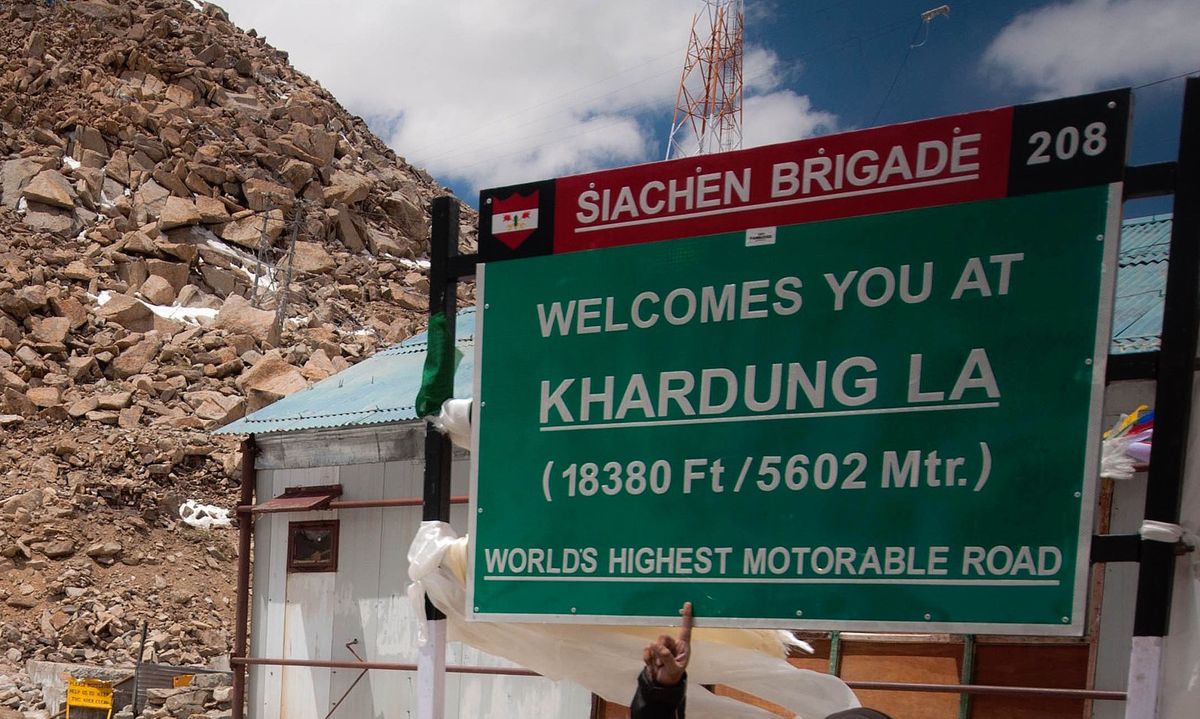About
A thousand fluttering prayer flags, a small shrine, the obligatory gift shop, and the extreme elevation (marked incorrectly) on the official Kardung La signpost welcome visitors to a view on top of the world.
Over 17,500 feet high on the west side of the Himalaya Mountains you'll find this windy roadside marker looking down on glaciers, and a few people celebrating their long journey. This is the top of Kardung La (Kardung Pass), which claims to be the world’s highest motorable road at 3.3 miles above sea level.
Unlike conquering Mount Everest, there's no need for months of training and tons of supplies to reach Kardung Pass. This roadside point can be accessed in your own car, but a few days at a lower altitude to acclimate your body to the high elevation is a must. Oxygen tanks are also a good idea, even if you're just traveling the roads below.
Like many other extreme places, there is some dispute over how accurate the title "highest road" is. The official government sign claims an elevation of 18,380 feet, but with modern GPS it's widely understood that the pass is actually 17,582 feet high. Other adventurers even dispute the very definition of what a general "road" is and claim nearby roads are higher if you have four-wheel drive to make it up. Regardless of the veracity of the claim, the drive to this marker on top of the world is an amazing journey.
Kardung La is the high spot on the road as it passes from Leh to the Nubra valley. From the pass, you can continue down to the valley below, where you may find camels left behind from the Silk Road days.
Related Tags
Know Before You Go
While it is possible to fly into Leh and simply drive up 25 miles with any local taxi, this is strongly discouraged. The elevation at Leh itself is 11,483 feet (about 2.2 miles), which can cause even healthy people to suffer effects of AMS, possibly even fatal, and traveling to the top of Kardung La adds an additional mile of height.
Most people taking up the Kardung La challenge begin at least several hundred miles away at Manali (an elevation of only 1 mile) and space out several overnight stays at or below 2 miles high. This takes several days but the trade-off is that at each rugged pass climbed the scenery changes in incredible ways. In addition to breathtaking views (literally), this journey will span a few cultures as well. Be respectful and carry lots of water, and possibly extra fuel. Permits must be obtained along the way and may be limited, so be prepared to stay overnight with only a few hours of electricity.
Delhi and Rajasthan: Colors of India
Discover Colorful Rajasthan: From Delhi to Jaipur and Beyond.
Book NowPublished
July 31, 2019


































